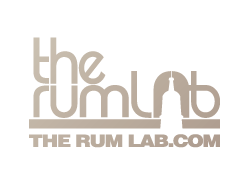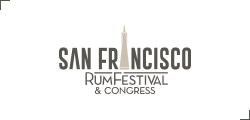Spirits Educator and Consultant: SHANNON MUSTIPHER

Shannon Mustipher is a spirits educator, cocktail consultant, and expert on the topic of rum and cane spirits. In 2014, she became the Beverage Director of Glady’s Caribbean in Brookone-night-only and has poured cocktails in settings ranging from neighborhood pubs to Michelin restaurants.
In addition to working with a number of spirits brands across a range of categories, she is one of the founding members of Women Leading Rum, an organization dedicated to providing education and professional development for industry and trade professionals. In 2018, she launched Women Who Tiki, a tropical cocktail-centric pop-up that gathers a team of women bartenders to share their talents and collaborate on creating a one night only experience, which has been featured at Rumba Seattle, Tiki Oasis, and NY Cocktail Expo.
Shannon’s writing, cocktail recipes, and opinions have been featured in a number of publications, including Punch.com, GQ.com, Liquor.com, New York Magazine, and the Huffington Post, and sue has been a panelist and presenter at Bar Convent Brooklyn, NY Rum Fest, The Museum of Food and Drink, and Food Book Fair. Her first book, Tiki: Modern Tropical Cocktails (Rizzoli/Universe), will be released in spring 2019/ She currently resides in Brooklyn, NY, and enjoys traveling, cooking, and collecting “too many books”. Learn more about Shannon in the next interview:
TRL: What does the rum mean for you? What made you fall in love with rum and when did it happen?
Rum is the most diverse, exciting – and in my opinion – underrated spirit in the world. I fell in love with it in 2015, when I was working on building the back bar program at Glady’s Caribbean. The goal was to find 50 rums, and I tasted over 200 to find the ones that best spoke to tradition and innovation. I had not tasted it for more than 10 years before that and was blown away by the variety of flavors I found in the category. I wanted our guests to be blown away too.
TRL: Three essential characteristics that define the rum according to your perspective.
The most important defining characteristic of rum is tradition – that there are distilleries using methods dating back 300 + years gives producers and brands the opportunity to offer flavorful liquids that other categories cannot muster. Yeast and fermentation methodologies – major contributors to robust flavors, are important as well, and in the rum category, you can find not only very old school methods still in use, as well as innovations meant to refine and obtain very specific flavors. Last, the diversity of cultural styles – from French to Latin, to English, means that there are a host of production methods and end products to choose from, meaning that there is a rum for every palate and taste.
TRL: What is the most important contribution you have made in the rum industry?
The most important contribution I have made is my education to consumer and trade, in which I bring light to the history and diversity of the category, and make the category more accessible to the layperson and more useful as a tool for bartenders seeking to craft better rum cocktails.
TRL: What is your favorite place for drinking rum?
Any place where friends who appreciate rum is my favorite place – be it in the Caribbean, at someone’s house, or one of my favorite rum bars.
TRL: Favorite drink + Recipe
Hi – Elevation
1.5 oz Ron Colón Salvadoreño 111 Proof
.5 oz Cynar Black
.25 oz Jageimeister
.5 oz cinnamon clove syrup
2 dashes Pimento or Angostura Bitters
Build all in a chilled rocks glass, add a large ice cube. Stir to chill, garnish with an orange twist, then serve.
TRL: We have read your article on split-based cocktails in Saveur. Tell us why should we not stop at just one spirit?
Donn the Beachcomber once noted, “what one rum can do, three can do better”. He took a culinary approach to spirits, pairing and combining liquids to draw out and highlight what he liked about each one. By combining spirits, you can bring out the floral and fruit notes in one pour, and/or accentuate the richer, earthier notes of another. Combining spirits allows the best qualities of each to shine, much like blending grape varietals that are not terribly interesting on their own can make for an engaging and dynamic bottle of wine.
TRL: How does the split base make the cocktail scene today more interesting? Maybe some mention worthwhile examples?
Eric Alpern of the Varnish in LA serves a Sazerac riff called Colonial Ties, which combines Rye with rum – an excellent interpretation of the classic, which also introduces rum to a consumer that may not otherwise call for it. Jessica Gonzales, who is currently based in Upstate NY, created Hot Lips while working at The NoMad, and brings infused tequila together with Mezcal in a Margarita riff. The best examples are based on easy and relatable classic services that the consumer can relate to, and discover something new at the same time.
TRL: Back to Rum, how does a newcomer brand like Ron Colón Salvadoreño fit into this split-based trend?
Ron Colón Salvadoreño allows the bartender to innovate with split base drinks with only one bottle. If a bartender really wants to push the boundaries, they can combine 2 bottles from the RCS range (The Range: RCS 111 Original which is a 6 year aged El Salvadorian column still rum with a twist of Jamaican pot still, RCS 111 Coffee is a cold brew infused version of the original or their RUM RYE and I also heard we have RUMZCAL on the way) to get multiple types of distillates into one server. It just gives the bartender a pre-batched split base that makes it easier for them to build cocktails and keep consistency.
TRL: Why is it important to educate the rum consumer?
As long as the consumer is under the impression that the rum category is comprised of “light, dark, and spiced”, they will miss out on the nuance that exists in the category: a white overproof rum from Jamaica is worlds away from an aged white rum from a Latin tradition – they look the same, but are made according to different methods and thus offer different flavors to the end result, Until the consumer is given an opportunity to learn about the differences in the category, they will not be able to approach it with curiosity or find a way to connect to it on a personal, as opposed to a generic or superficial level.
TRL: Is the commitment to sustainable development the key to success for the permanence of the rum industry in the world? Why?
Absolutely. When you consider that rum is tied to the agricultural industry that produces sugar, and factor in the risks we run in regards to scarcity of water due to drought in some areas of the world, any practice that reduces negative impact on the environment and in the best practice nurtures the environment via the renewal of soil – the environment in which cane is cultivated will become essential.
TRL: Who would like to meet in the rum industry? What would you say to him/her?
I would be delighted to meet Trudiann Branker of Mt Gay Rum. I would tell her that it’s an inspiration to see her at the helm of managing the critical step of managing the blending protocols at one of the world’s most iconic rum brands, on the island where the modern technique of blending marques from pot and column was pioneered and perfected.
TRL: Why is the role of the bartender important in the rum industry?
First and foremost, the role of the bartender is to provide great hospitality. In an environment where a guest feels welcomed and cared for, they feel free to ask questions and are open to discovering rum. To support this, the bartender will benefit from learning everything they can about the category, and open themselves up to dropping any biases they may have picked up from any early experiences with mass market rums.
TRL: What is your advice for new generations in the rum industry?
Learn, learn, and then learn some more. This can be by tasting, reading, meeting with, and conversing with your colleagues in the industry. If you have a moment where you are inspired, as I was, to make an impact, be it by creating a wonderful cocktail, a new beverage program, an educational course, or an activation concept, even if you are new to it and don’t quite know how to do it – just start, and when you need to, ask for help. When you see an opportunity to help someone, likewise do the same. Good things take time, and there is no shame in making a mistake here and there. If you have a dream to work with rum, experiment until you find a role that works for you, and always keep the people you intend to serve at the core of the choices you make.
TRL: How can people learn more about you? Website? Social media page?













